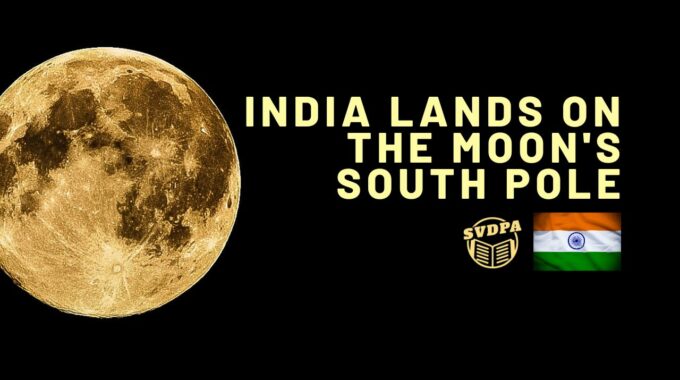https://youtu.be/lztEnBFN5zU?si=Unpz8b7p0SeR_ezj An interesting video published by VOX discusses the concept of adventure playgrounds, which offer…
India lands on the Moon’s south pole, close to the moon water needed for future astronaut missions
Discovery of Water on the Moon
The possibility of water on the moon has been a topic of speculation since the 1960s. While initial samples from the Apollo missions appeared dry, subsequent research in 2008 and 2009 found evidence of water. For instance, in 2008, Brown University researchers discovered hydrogen inside tiny beads of volcanic glass from lunar samples. In 2009, a NASA instrument aboard India’s Chandrayaan-1 probe detected water on the moon’s surface.
Significance of Frozen Water
The presence of frozen water on the moon is seen as crucial for several reasons:
- Moon Colony: It can support the establishment of a moon colony.
- Lunar Mining: Water is a valuable resource for potential lunar mining operations.
- Missions to Mars: The presence of water can aid in potential missions to Mars.
Challenges of the Moon’s South Pole
The south pole of the moon presents unique challenges for landing missions. It is filled with craters and deep trenches, making it a tricky landing spot. Russia’s Luna-25 craft, which was scheduled to land on the south pole, crashed during its approach. Both the US and China have planned missions to this region.
Successful Landing
The Vikram lander, a component of India’s Chandrayaan-3 mission, successfully landed on the moon’s south pole. This achievement was met with cheers and applause in the control room, marking a significant milestone for India in space exploration.
India’s successful landing has positioned the country as a major player in the global space race. India is now the fourth country, after the US, China, and the former Soviet Union, to achieve a controlled landing on the moon. The choice of the moon’s poles, a more challenging landing site than the equator, adds to the significance of this accomplishment.
Economic Implications
The successful landing enhances India’s profile in the global space market. India has been moving towards privatizing its rocket launches and aims to expand its share in the global launch market significantly in the coming decade. The country’s reputation as a low-cost provider of space launch services will likely aid this ambition. The global space launch market is projected to grow from $9 billion this year to over $20 billion by 2030.
Major space agencies, including NASA, the European Space Agency, Russia, and China, are planning returns to the moon. This suggests potential collaborative opportunities in lunar exploration and habitation.
Resources:
https://www.cbc.ca/news/science/india-fourth-country-to-land-on-moon-1.6944716





